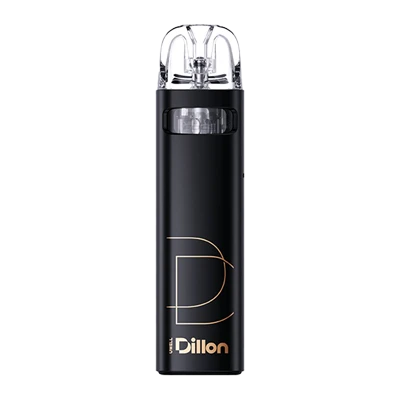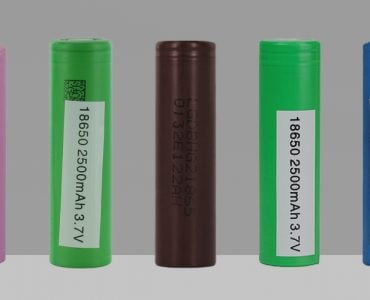Vape confidently with products from these top vaping brands
There are a lot of vape brands out there. With the increase in popularity of vaping, more companies than ever are popping up and producing vape mods, pod vapes, vape tanks — you name it. But as with any industry, there are good brands and bad brands, so how do you know which ones are worth purchasing and which ones you should avoid?
There are a number of factors that make for a ‘good’ vaping brand. Among these factors are their innovation, product variety, build quality, quality control, ease of use, and performance.
The best vape brands invest considerable time, money, and effort into researching and developing the best products in their respective categories (devices, tanks, or ejuices). This investment into research and development means that their products are well-thought out, well-designed, and meet the needs of consumers.
They also have strict and stringent manufacturing processes that ensure that there are no build quality defects from the factory. We’ve all been there with a device from some unknown brand that just doesn’t fit together properly, or which has clear manufacturing defects and build quality issues.
Purchasing products that are made by one of the top vaping brands is a near guarantee that what you’re buying will be reliable, long-lasting, and satisfying to vape with. But what are the vape brands that you should consider?
To help you make the best choice, we’ve put together this list of the best vape brands in 2025. These vaping brands have been chosen based on staff testing, community feedback, brand reputation, general build quality, and product performance.
The list of brands below is in alphabetical order, not in order of best to worst. All of the brands on our list produce equally high-quality vaping products that are highly rated by vapers in the community.
Freemax was founded in 2013 but only started to see real success in 2016 with the release of their Starre Pure sub ohm tank. In 2017 they released their Fireluke Mesh tank, the world’s first mesh coil sub ohm tank from which all mesh coil tanks followed. Freemax was also one of the first vaping companies to popularize and bring double, triple, and quadruple mesh coils to the market.
Freemax makes a number of products, but they’re best known for their “Maxus” series of products and their “Fireluke” line of sub ohm tanks. In addition to their vaping products, Freemax is known for their industry leading mesh coil technology, FM COILTECH. As of early 2024, FM COILTECH5.0 is their most recent coil formulation.
There are over 20 million users of their products worldwide and Freemax products are sold in over 100 countries. It’s safe to say that Freemax is extremely popular with vapers all around the world.
Freemax focuses on the quality of their components and utilizes lead-free brass, high-purity cotton, and harmless surface treatments on every small part of their products. For Freemax, safety is a priority. They also take a leading role in preventing use by minors by carefully reviewing their promotion material and taking special measures to prevent minors from accessing their purchase channels.
Freemax makes sub ohm tanks, vape mods, pod vapes, and pod mods, all of which are consistently more innovative and better than the products that came before them. We’ve tried and reviewed dozens of Freemax’s products and they consistently deliver a great vaping experience.
Whatever the type of vape that you’re looking for, Freemax is a solid vaping brand with an outstanding reputation that you can trust. Their products are innovative, flavorful, and consistently of good quality.
OUR FAVORITE PRODUCTS FROM FREEMAX



SAVE 10%
CODE: VERSED
Geekvape was founded in 2015 and, like many of the other major vaping brands, is headquartered in Shenzhen, China. Their first hit product, the Tsunami RDA, was released in November, 2015 and since then they’ve grown to become known as one of the most popular vaping brands of all time. Even if you’ve only recently started vaping, there’s a good chance that you’ve at least seen some of Geekvape’s products.
Geekvape’s flagship product series is their “Aegis” line of mods, pod mods, and pod vapes. Geekvape’s Aegis devices are known for their drop resistance and durability. This makes them a go-to choice for vapers looking for a device that will last. All of Geekvape’s Aegis mods are also IP rated for dust and water resistance, providing further protection against daily hazards.
Geekvape’s “Aegis Legend” dual battery vape mod became an instant hit upon its release in 2017 and to this day it remains one of the most highly-rated devices of all time. Geekvape has released a number of Aegis mods since the Legend and each one has enjoyed similar success and popularity amongst vapers.
In addition to their Aegis line of products, Geekvape is also the company behind the popular and flavorful “Zeus” line of tanks. Their Zeus tanks consistently see placement on “Best Tank” lists of numerous publications (including our own), and receive praise from vapers on popular forums. Pairing a Zeus tank with any mod is a guaranteed way to get the most out of your ejuices.
Geekvape manufactures vape mods, pod vapes, pod mods, sub ohm tanks, and rebuildable tanks. Their current series of devices include the Aegis, Geekvape U, Geekvape Z, Wenax, and Obelisk.
OUR FAVORITE PRODUCTS FROM GEEKVAPE



SAVE 10%
CODE: VERSED
HorizonTech’s portfolio of vaping products is limited to only a few categories, so their offerings are not quite as extensive as some of the other vaping brands on our list. However, the product categories that they do cover, subohm tanks and disposables, include some of the best pieces of vaping hardware that you can buy. HorizonTech is known as one of the best tank brands for vaping and they got that reputation for a reason.
HorizonTech’s research, development and innovation have brought us legends like the Falcon King, Falcon II, and Aquila subohm tanks. All three of these tanks deliver the pinnacle of flavor, clouds, and coil life for a subohm tank, so you really can’t go wrong with any of them. Subohm tanks are HorizonTech’s specialty and after so many years in the industry, they’ve perfected how to make them.
A new product category that HorizonTech has recently ventured into is disposables. Their first disposable, the Binaries Cabin, proved to be an excellent device with excellent flavors on offer. This was followed by the Binaries 6K, and then by the Binaries SE6000 and TH6000. Although new to manufacturing disposables, HorizonTech’s devices are earning themselves a name as the hot disposables to get.
Other than disposables and subohm tanks, HorizonTech does have their Durandel pod mod and Asteroid pod kit, however these products have not seen anywhere near the success of their subohm tanks and are relatively unknown to the general public. With that being said, we recommend sticking with their subohm tanks and disposable vapes for the best possible experience.
OUR FAVORITE PRODUCTS FROM HORIZONTECH



SAVE 10%
CODE: VERSED
Founded in 2011 and headquartered in the Chinese vape production hub of Shenzen, Innokin has proved itself over and over as one of the most innovative vape brands in the world.
The company holds hundreds of patents on vape technology and has become well-known for partnering with others to create unique products. For example, Innokin was the first vape brand to make a metal-free, conductive ceramic vape coil. It also created the world’s first water-based vape (with Aquios) in the Innobar C1 and was one of the first brands to introduce 100% recyclable and sustainable packaging.
As one of the veterans of the vape industry, with over 13 years in the game, Innokin has a huge number of devices to its name. Some of the earliest successes include the easy-to-use and reliable Endura T18 and the more advanced Coolfire Z series of mods. More recently, the company has introduced several popular pod devices to consumers, including the Klypse Zip and Arcfire.
Innokin also produces a huge range of 510-threaded tanks, from simple replacements for their own devices to more adaptable tanks that can be used with almost any mod. The company has even dipped its toe into the world of disposables, launching products that range from 600 puffs to over 8000. One of the most interesting is the Innobar CLK, a swappable closed pod system that skirts the line between disposable and refillable devices.
Innokin continues to innovate, making it one of the most exciting vape brands to watch. Recent devices include the unique Trine, a refillable pod vape with a removable and easily disposable battery, and the incredible Sensis. The Sensis, which is billed as a 4th Gen vape, features automatic coil priming, AC frequency adjustment, and a 510 adapter so you can switch between pod and tank at will.
Innovation aside, Innokin is known for the high-quality, reliable, and well-made devices it releases. With such a long pedigree and a massive range of vapes, it’s undoubtedly a brand that is easy to recommend.
OUR FAVORITE PRODUCTS FROM INNOKIN



SAVE 10%
CODE: VERSED
Lost Vape was established in 2014 with the goal of bringing unique, high-end devices to the market. They wanted their devices to be functional and easy to use, while still being beautiful as well. Since then they’ve released a number of popular product series like their Orion and Ursa lines of devices.
Lost Vape is perhaps best known for their premium and expensive vape mods which use EVOLV’S DNA chipset. This chipset is widely regarded as the best around in terms of customizability, reliability, and consistency, and Lost Vape was the first company to bring mods that use the DNA chipset to market. These DNA mods are a big reason why Lost Vape is known as one of the best vaping mod brands out there.
If you want to get your hands on a DNA mod then be prepared — they’re expensive and cost a pretty penny. However, Lost Vape realized that their DNA mods were not in everyone’s price range and so their “Quest” series was born. These Quest devices use Lost Vape’s own in-house chipset to bring a similar level of reliability and performance as their DNA mods, but at a fraction of the price.
Whether you’re after the best vape mod or pod vape that money can buy, or you’re just looking for a durable and reliable device, Lost Vape’s DNA and Quest series devices can offer what you’re looking for.
Over the past few years, we’ve reviewed dozens of Lost Vape’s products; both their DNA devices and ones from their Quest series. In general, we’ve been impressed with the performance that they deliver, as well as their unique features. Lost Vape is a brand that we trust; no list of the best vape brands would be complete without them.
OUR FAVORITE PRODUCTS FROM LOST VAPE



SAVE 10%
CODE: VERSED
OXVA is a much younger vape brand than most of the others on this list, but it is one of the fastest growing. The company was founded in 2019 by Justin Lai, who was also co-founder of GeekVape and designer of their superb Aegis range. Like most other major vape brands, OXVA (which is supposedly named after the Ox for that animal’s strong and reliable nature) is headquartered in Shenzen, China.
In the few short years since it was started, OXVA has become known for its high-quality products and innovative designs. Aside from winning numerous awards from vape shows and websites, the XLIM Pro, one of the company’s most popular products, also recently won Gold at the London Design Awards.
OXVA is best known for the Xlim range of pod vapes, including the XLIM Pod, XLIM SE, and the previously mentioned XLIM Pro. These are loved by vapers for their excellent reliability, but also for always going above and beyond the competition. That could mean providing a bigger battery than most, or a wider range of coil resistances, but whatever it is, there’s always something about a new OXVA vape that makes you say “oooh, that’s a nice touch.”
OXVA isn’t just about pod vapes, having more recently launched disposables (the OXBAR) and even a range of e-liquid called OX Passion. For vapers who want a bit more power and vapor, there’s the excellent Origin X and Origin 2, more advanced devices with up to 80W of power and RBA tanks. And while there isn’t yet the same number of different devices offered by more established brands, recent additions like the 40W ONEO Unicoil pod vape do a great job of bridging the gap between MTL and RDL/DL devices.
As a team, Versed Vaper has tried, tested, and reviewed almost all of OXVA’s devices, tanks, and disposables, and rarely do they achieve anything but an excellent rating. The design, build quality, and features are all clearly well thought through before products are launched, making OXVA a brand that vapers can be confident about buying.
OUR FAVORITE PRODUCTS FROM OXVA



SAVE 10%
CODE: VERSED
Uwell, like many of the other best vaping brands on our list, was founded in the infancy of vaping in 2015. The company’s first product, the CROWN tank, became an instant best-seller upon its release in the United States. Following up on this success, Uwell released the CROWN II in 2016, and then the CROWN III and their first Valyrian tank in 2017.
Today, Uwell is best known as the brand behind the Caliburn series of pod vapes. They released the first Caliburn device in 2019 and since then, they’ve released numerous lines of devices under the Caliburn name, including the Caliburn Koko, Caliburn G, Caliburn A, and Caliburn Tenet series of products.
Uwell is constantly innovating and a big reason for their success is their strict quality control systems, which is evidenced by the few problems that vapers experience with their products. Their Caliburn products are consistently ranked by vaping media websites and consumers alike as some of the best pod devices available. It’s safe to say that this wouldn’t be the case if their products weren’t well-built.
Uwell’s product offerings will disappoint users of rebuildable tanks and those who like to tinker with their devices, as they don’t offer any squonk mods, RDAs, RTAs, or RDTAs at this time. But for users of sub ohm tanks, pod mods, and pod vapes, Uwell’s products are at the top of their class.
Because Uwell’s products are in such high-demand, it’s easy to find them available at most online and brick & mortar vape shops. The popularity of their products also means that most shops keep their replacement coils readily available; all good news for consumers.
OUR FAVORITE PRODUCTS FROM UWELL



SAVE 10%
CODE: VERSED
VAPORESSO was only established relatively recently in 2015. However, their parent company, SMOORE, has been around since 2009. VAPORESSO released their first product in 2016, their first dual battery mod in 2017, and their “ZERO” pod vape in 2018 which sold more than 10 million kits worldwide.
Since then, VAPORESSO has brought countless popular devices to the market, such as their GEN series of mods and their XROS series of pod vapes. Few vaping brands have had success and recognition like VAPORESSO, and there’s good reason for their success.
One large factor behind VAPORESSO’s success as a vaping brand is their investment into their company. VAPORESSO spends more than 450 million USD each year on research and development. They have five world-leading laboratories, medical-grade factories, and 14 industrial parks which cover an area of more than 550,000 ㎡.
VAPORESSO’s research and development covers the fields of nicotine satisfaction, flavors, and device performance, all of which come together to create the VAPORESSO products that we see hitting the shelves each year.
VAPORESSO vaping products cover nearly the entire range of device categories, including vape mods, vape tanks, vape pens, pod vapes, pod mods, and vape tanks. If you’re looking for a certain type of vaping device, chances are that VAPORESSO makes it. This wide assortment of products also makes VAPORESSO one of the best vaping brands for beginners, as even new vapers will find a number of simple yet effective vapes in their lineup.
We’ve reviewed nearly every product that VAPORESSO has released in the past few years and we’ve yet to try one that fails to hit the mark. Many of VAPORESSO’s products see daily use by our team — a testament to their build quality and performance.
When you take into account their R&D, the build quality of their products, and the popularity of their devices, VAPORESSO is easily one of the best vape brands in 2025.
OUR FAVORITE PRODUCTS FROM VAPORESSO



SAVE 10%
CODE: VERSED
Voopoo as a company was founded in 2016, but their roots go all the way back to 2010 where the founders of the company were already deeply involved in the fields of medical and industrial automation control. In 2014, they began focusing on electronics and atomization research. Then in 2016 Voopoo was established after acquiring Woodyvapes, a high-end electronic cigarette brand in the United States. As they say, the rest is history.
In 2017 Voopoo launched their first DRAG mod, which quickly became one of the best selling devices of all time. The beautiful resin panels on the device were unlike anything that had been seen on a vape mod at the time, and the ultra fast firing speed and accurate power output put the DRAG in a class of its own.
Since the launch of the original dual battery DRAG mod, Voopoo has launched numerous other devices under the “DRAG” series, including the Drag 2, Drag 3, and most recently the Drag 4. Products under the DRAG series include vape mods, vape pens, pod vapes, and pod mods.In addition to their DRAG series, Voopoo also has a number of other popular product lines like their Argus and Vinci series of devices. Products in these series include vape mods, pod vapes and pod mods. By offering a number of product categories under each series, each with their own benefits and differences, there’s truly a device for everyone in Voopoo’s product catalog.
As a leader in the field of electronic cigarette technology, Voopoo actively tests new materials and invests heavily in atomization research and development, as well as their GENE chip technology. As a testament to their innovation, Voopoo has applied for over 1000 patents relating to vaping and e-cigarette technology. Voopoo currently employs over 6000 people to further their technological innovation.
Voopoo offers products in every device category so no matter what you’re looking for, you’ll find a device to satisfy your needs.
OUR FAVORITE PRODUCTS FROM VOOPOO



SAVE 10%
CODE: VERSED
Established in 2012 by Sky Zhang, Wotofo was one of the first vaping brands to launch in China. Sky Zhang was a former smoker and early adopter of vaping technologies who quickly realized the potential that vaping had to save lives.
By surrounding himself with the right people and a team of knowledgeable and passionate engineers, Wotofo started manufacturing products. Within only a couple of years, Wotofo had become a household name for vapers around the world.
Wotofo first gained recognition for their rebuildable tanks. Their Freakshow RDA was launched in 2014 and, after worldwide success, Wotofo continued to release more new and innovative rebuildable tanks over the next few years. This included the Serpent SMM RTA in 2017, which was followed by their extremely popular Profile series of RDAs, RTAs, and RDTAs.
Today, Wotofo manufactures every type of vaping product under the sun; and they’re good at it too. They offer disposable vapes, pod systems, vape mods, sub ohm tanks, and starter kits, many of which have become just as popular as their rebuildables.
Still, in the eyes of many vapers, Wotofo remains a brand for rebuildable users and in our opinion, it’s what Wotofo does best. Sure, they make good products in many categories, but their rebuildables are where you’ll get the most out of what Wotofo has to offer.
If you’re a rebuildable user who has flavor as their number one priority, you’ll want to check out Wotofo’s RDAs, RTAs, and RDTAs.
OUR FAVORITE PRODUCTS FROM WOTOFO



SAVE 10%
CODE: VERSED
What makes these vaping brands the best?
When considering vape brands for this list, we prioritized our picks based on brand reputation, manufacturing processes, product quality, device performance, product selection, community feedback, and personal experience with their products.
All of the brands on this list have a good reputation for manufacturing quality products and taking care of their customers with after-service support. This is important because when you’re purchasing an expensive product, you want to make sure that it’s going to work right out of the box. In the event that something does go wrong, you also want to be sure that you’ll be able to get the support that you need from the brand.
The brands on this list have effective quality control processes that ensure high product quality from the factory. This makes it extremely unlikely that you’ll have problems with your purchase, such as broken or defective parts, leaking, or malfunctioning. This quality control also means that the device will perform as intended and, in the case of brands on this list, give you the best possible vaping experience.
Everyone has different needs and preferences, so having a large selection of products to choose from is important. The brands on this list have a wide variety of products that each have their own pros, cons, and features. Whether you’re looking for a large mod that can take 21700 batteries, or a small pod vape that you can easily throw in your pocket, these brands give you that choice. While some of the brands on our list only focus on a few specific categories like tanks or pod vapes, they have many products in those categories so you can choose the right one for you all the same.
Last but certainly not least, we listened to the feedback from the vaping community, as well as our own experience with testing and reviewing the products from these brands. Who would know better which vaping brands are the best other than real vapers using the products? Our team also has extensive experience with products from hundreds of vaping brands, so we used that data to pick the best ones of the bunch.
Which brand should you choose?
Which brand you choose will ultimately depend on what it is that you’re looking for. While some brands have a broad catalog of products that covers nearly every type of vape, like Vaporesso and Geekvape, other brands like Lost Vape and Horizon Tech focus their efforts on specific types of vapes like mods or tanks.
To make choosing the right vape brand more simple, we’ve created a quick cheat sheet down below with the best vaping brands (in our opinion) for each type of vape:
- Best Brand for Disposables: ELFBAR, ZOVOO, Binaries
- Best Brand for Pod Vapes: Uwell, Vaporesso, Voopoo
- Best Brand for Vape Mods: Geekvape, Lost Vape
- Best Brand for Subohm Tanks: Freemax, Horizon Tech
- Best Brand for Rebuildable Tanks: Wotofo
- Best Brand for Squonk Mods: Vandy Vape, Wotofo
- Best Brand for Vape Pens: Vaporesso, Freemax
- Best Brand for Freebase Ejuices: Dinner Lady
- Best Brand for Nicotine Salt Ejuices: Dinner Lady, Pachamama
- Best Brand for Nicotine-Free Ejuices: Pachamama, Vapetasia
- Best Vaping Brand for Beginners: Uwell, Vaporesso, Voopoo
What is the best brand of coils for vaping?
The best brand of coils is going to be the one that is suited to your specific tank because not all vape tanks are compatible with the same coils. Further, not all coils from the same brand will work with all tanks from that brand. For example, if you’re using a Vaporesso tank, you’ll want to make sure that you get the Vaporesso coils which are made for that specific tank.
If you’re looking for a more general answer, the companies that make the best coils in 2025 are going to be Freemax, Geekvape, Horizon Tech, Vaporesso, and Voopoo. You really can’t go wrong with any of the coils and tanks from these companies.
The bottom line
There are hundreds of vaping brands out there, but not all of them are created equal. By choosing a product made by one of the vaping brands on this list you can be sure that you’re getting a quality, high-performing vape that will last.
Because these brands are so popular, you have to watch out for counterfeits. The best way to protect yourself is to make sure that you’re purchasing your products from a reputable brick & mortar or online vape shop. You should also check the authenticity code of any product that you purchase on the brand’s official website.
Let us help you
Have a question or a comment? Can’t decide which brand to pick? Even if you just want to share your love for vaping. Send us an email! We would love to hear from you!



















